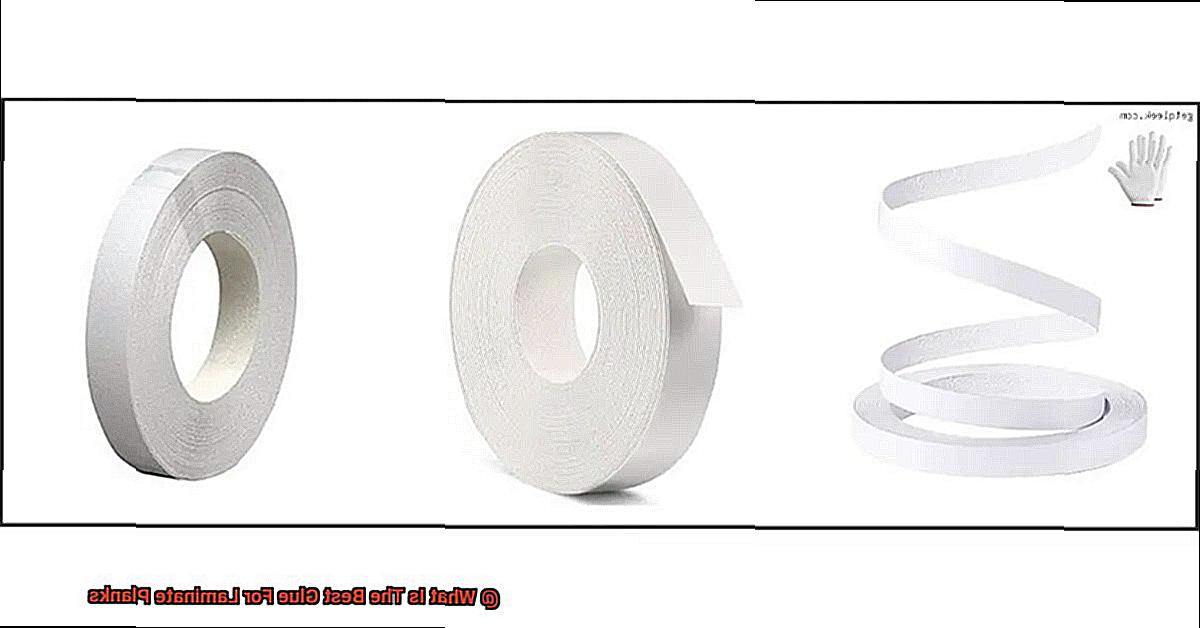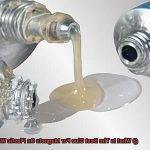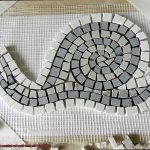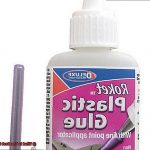Are you in search of the perfect glue to secure your laminate planks? Look no further. In this blog post, we’ll take a deep dive into the world of laminate installation and explore the best glue options available. Get ready for floors that will withstand anything.
Imagine this: you’ve finally decided to give your floors a stunning makeover with beautiful laminate planks. You’ve spent hours picking out the perfect color and pattern, and now it’s time to bring your vision to life. But here’s the catch – without the right glue, your dream floors could turn into a nightmare.
When it comes to choosing the best glue for laminate planks, there are a few things to consider. First and foremost, you need a glue with exceptional bonding strength. Your laminate planks will face heavy foot traffic, furniture weight, and even accidental spills. A weak glue just won’t cut it.
Next, you need a glue that works well with laminate materials. Laminate planks often have layers of compressed wood or fiberboard with a laminate top. So, it’s crucial to choose a glue that can stick effectively to both the laminate surface and the subfloor.
Lastly, ease of application and environmental friendliness matter too. You want a glue that is easy to work with and dries quickly so you can finish your installation in no time. And let’s not forget about health – choosing a low VOC (volatile organic compounds) glue ensures an indoor environment that’s safe for everyone.
So if you’re wondering which glue checks all these boxes, stay tuned. We’ll explore some top contenders for the best glue for laminate planks in the next sections. From water-based glues to adhesive tapes, we’ve got all the information you need to make an informed decision. Let’s dive in and get your laminate installation journey off to an amazing start.
Types of Glue Used for Laminate Planks
Contents
- 1 Types of Glue Used for Laminate Planks
- 2 Advantages of Using PVA Glue for Laminate Flooring Installation
- 3 Benefits of Urethane-Based Adhesives
- 4 Alternatives to Glue for Installing Laminate Planks
- 5 Factors to Consider When Choosing the Best Glue for Laminate Planks
- 6 How to Ensure Proper Adhesive Application Techniques
- 6.1 Step 1: Thorough Surface Preparation
- 6.2 Before applying adhesive, it is paramount to prepare the surface properly. Take the time to clean the area thoroughly, ensuring it is free from any dust, dirt, or debris. Use a vacuum cleaner or broom to remove loose particles, and then wipe the surface with a damp cloth. This meticulous preparation will create a clean and smooth surface for the adhesive to adhere to.
- 6.3 Step 2: Choose the Right Adhesive for Laminate Planks
- 6.4 Step 3: Follow Manufacturer’s Instructions Carefully
- 6.5 Step 4: Apply Adhesive Evenly and Consistently
- 6.6 Step 5: Apply Firm Pressure and Allow Proper Drying Time
- 7 Tips on Consulting with a Professional or Manufacturer
- 8 Conclusion
Preparing to install laminate plank flooring? Don’t let the adhesive selection puzzle you. We’re here to reveal the various types of glue that can make your project a success. The right glue is vital for a secure and long-lasting installation. So, let’s dive in and explore the sticky truth about glue for laminate planks.
PVA Glue: The Reliable Choice
When it comes to laminate plank installations, PVA (polyvinyl acetate) glue takes center stage. Renowned for its robust bonding properties, this water-based adhesive is a go-to choice for many woodworking projects. What sets PVA glue apart is its ease of application, clear drying feature, and ability to withstand the stresses and movements associated with laminate flooring.
Polyurethane Glue: A Waterproof Wonder
If you’re looking for an adhesive that can brave moisture and temperature fluctuations, polyurethane glue is your hero. This waterproof adhesive forms an unyielding bond between laminate planks and the subfloor, making it ideal for areas prone to dampness like bathrooms and kitchens. With exceptional strength, it ensures your flooring stays intact even under heavy foot traffic.
Specialized Adhesives: Tailored for Success
Laminate flooring manufacturers often recommend specialized adhesives specifically formulated for their products. These adhesives offer a potent combination of strong bonding and flexible floor movement. By using these recommended adhesives during installation, you ensure not only proper adherence but also enhance the longevity of your laminate flooring.

Epoxy Adhesives: The Heavy-Duty Option
When durability reigns supreme, epoxy adhesives rise to the occasion. Celebrated for their incredible strength, epoxy adhesives are prominent in high-traffic areas and commercial settings. They stand up to heat, moisture, and chemicals, making them a reliable choice for demanding environments. However, bear in mind that epoxy adhesives require careful mixing before application.
Construction Adhesives: Versatile and Strong
For laminate plank installations, construction adhesives offer a versatile and robust solution. These adhesives are designed to create a powerful bond on various surfaces, including laminate flooring. Their versatility extends beyond flooring projects, making them handy for other DIY tasks around the house.
Advantages of Using PVA Glue for Laminate Flooring Installation
Are you considering installing laminate flooring in your home? If so, let me tell you about the amazing advantages of using PVA glue for laminate flooring installation. PVA glue, also known as white glue or wood glue, is a popular and reliable adhesive choice for this type of project, and it’s easy to see why.
First and foremost, PVA glue offers easy application. This liquid-based adhesive can be effortlessly applied to the back of each laminate plank using a brush or roller. Its smooth and even spreading ensures a secure bond between the planks and the subfloor. No messy application or uneven coverage to worry about.
But what sets PVA glue apart is its exceptional adhesion properties. Once applied correctly, it forms a tight and unyielding bond between the laminate planks and the subfloor. This means no shifting or separating over time, even under heavy foot traffic or other stresses. With PVA glue, you can have confidence in the long-lasting durability of your laminate flooring.
In addition to its strong bond, PVA glue boasts a quick drying time. Unlike other adhesives that may take hours or even days to fully dry, PVA glue typically dries within 30 minutes to an hour, depending on environmental conditions. This speedy drying time allows for efficient installation, minimizing waiting time between applying the glue and laying down the laminate planks. Time is money, after all.
Safety is also a top priority when it comes to any home improvement project. Luckily, PVA glue is non-toxic and low in volatile organic compounds (VOCs). These harmful chemicals can be released into the air during and after application of certain adhesives, potentially causing health issues. By choosing PVA glue, you can create a healthier indoor environment without compromising on the effectiveness of the adhesive.
Speaking of health, let’s talk about your wallet. PVA glue is a cost-effective choice for laminate flooring installation. It is readily available at hardware stores and competitively priced. Additionally, due to its strong adhesion properties, you’ll only need a small amount of PVA glue to secure the laminate planks. This not only minimizes wastage but also saves you money in the process.
Benefits of Urethane-Based Adhesives
In our previous discussion, we explored the wonders of PVA glue for laminate flooring installation. Today, we’re shifting gears to discover the unbeatable benefits of urethane-based adhesives. Get ready to be amazed as we delve into why these adhesives are the go-to choice for creating a secure and long-lasting bond between laminate planks and the subfloor.
Unparalleled Bonding Strength:
Urethane-based adhesives reign supreme when it comes to holding your laminate flooring in place. Their robust and unbreakable bond ensures that your flooring stays firmly fixed for years to come. With these adhesives, you can bid farewell to loose planks and shifting floors.
Flexibility for Stability:
Unlike other adhesives, urethane-based adhesives offer the perfect combination of strength and flexibility. This unique flexibility allows your laminate planks to naturally expand and contract with temperature and humidity changes, preventing unsightly buckling or warping over time. Say goodbye to those pesky gaps and say hello to a beautifully stable floor.
Moisture Resistance at Its Finest:
Kitchens, bathrooms, or basements – these are areas where water can wreak havoc on your laminate flooring. Fortunately, urethane-based adhesives have got your back. Their remarkable moisture-resistant properties create a protective shield, preventing any water from seeping through the gaps and causing damage to your subfloor or flooring itself.
Silence is Golden:
Nobody likes a noisy neighbor, especially when they live just above you. With urethane-based adhesives, you can bid farewell to those unwanted noises. These adhesives offer excellent sound reduction properties that minimize noise transmission between floors. Enjoy a peaceful and quiet living environment without any creaking or squeaking underfoot.
Easy Application for DIY Enthusiasts:
Calling all DIY enthusiasts. Urethane-based adhesives are here to make your installation process a breeze. Available in both liquid and pre-mixed forms, these adhesives are incredibly easy to use. Grab a trowel or notched trowel, spread the adhesive evenly onto the subfloor, and revel in the secure bond it creates.
Alternatives to Glue for Installing Laminate Planks
Elevating your space with stunning laminate planks doesn’t have to involve messy glue. In fact, there are a plethora of alternatives that can make the installation process a breeze. Join us as we embark on a journey beyond glue, exploring the world of click-lock planks, adhesive tape wizardry, self-adhesive wonders, and the floating installation method. Get ready to discover the fascinating alternatives that will revolutionize your laminate flooring experience.
Click-Lock Laminate Planks:
Picture a harmonious puzzle where each piece effortlessly falls into place. That’s the magic of click-lock laminate planks. These ingenious planks feature an interlocking mechanism that allows them to snap together seamlessly. With no need for glue, this method is a DIY aficionado’s dream come true. Snap, lock, and revel in the accomplishment of your stunning new floor.
Adhesive Tape:
If you crave a bond that’s strong and steadfast but detest the mess that comes with glue, adhesive tape is your knight in shining armor. Simply apply this double-sided tape to the edges of your laminate planks and firmly press them together. But beware. Choose high-quality tape specifically designed for laminate flooring to ensure a secure installation. With adhesive tape, you’ll enjoy a reliable connection without getting stuck in a sticky situation.
Self-Adhesive Laminate Planks:
For those who cherish convenience above all else, self-adhesive laminate planks are a game-changer. These marvels come with a pre-applied adhesive layer on their backs, eliminating the need for additional glue. Just peel off the protective backing and firmly press the planks onto the subfloor – it’s as effortless as it sounds. Say goodbye to messy glues and hello to hassle-free installations that will leave you beaming.
Floating Installation Method:
If you yearn for flexibility and versatility in your laminate flooring, the floating installation method will sweep you off your feet. With this approach, the planks don’t attach directly to the subfloor; instead, they gracefully float on top of it. Held together by their own weight and an underlayment or padding, these planks offer easy maintenance and replacement options. Bid adieu to glue and embrace a world where freedom reigns supreme.
Factors to Consider When Choosing the Best Glue for Laminate Planks
If you’ve decided to go the traditional route and use glue for your laminate planks, you’re in the right place. As an expert in all things laminate, I’m here to guide you through the factors you should consider when choosing the best glue for your project. So grab a cup of coffee, sit back, and let’s dive into this comprehensive guide.
Factor 1: Type of Laminate Plank – Compatibility is Key
Not all laminate planks are created equal. With high-pressure laminate (HPL) and low-pressure laminate (LPL) options available, it’s crucial to choose a glue that is compatible with your specific type of laminate plank. This ensures a strong bond and a successful installation.
Factor 2: Application Method – Trowel or Tube?
Are you a trowel enthusiast or do you prefer the convenience of a tube? The application method plays a significant role in selecting the right glue. Trowel application allows for precise control over adhesive layer thickness, while tube glues offer easy and precise application. Consider your personal preference and accessibility when making this decision.
Factor 3: Bond Strength – Firm and Long-Lasting
We all want our laminate planks to stay firmly in place, right? That’s why bond strength is essential. Look for a glue specifically formulated for laminate materials that offers a strong bond. This guarantees that your planks won’t budge, providing long-lasting beauty and durability.
Factor 4: Drying Time – Conquer Your Installation Efficiently
Time is precious, especially when it comes to completing your laminate flooring project. To avoid unnecessary delays, opt for a glue with a quick drying time. This way, you can proceed with confidence and conquer your installation efficiently.
Factor 5: Water Resistance – Protect Your Investment
Laminate planks often find themselves in moisture-prone areas like kitchens and bathrooms. To protect your flooring investment, choose a glue that offers water resistance. This shields your underlying subfloor from water damage and prevents unsightly warping or buckling over time.
How to Ensure Proper Adhesive Application Techniques
Laminate flooring is a popular choice for its durability and affordability. However, to ensure the longevity and stability of laminate flooring, it is crucial to follow proper adhesive application techniques. In this article, we will explore five essential steps that will help you achieve a strong and durable bond for your laminate planks.
Step 1: Thorough Surface Preparation
Before applying adhesive, it is paramount to prepare the surface properly. Take the time to clean the area thoroughly, ensuring it is free from any dust, dirt, or debris. Use a vacuum cleaner or broom to remove loose particles, and then wipe the surface with a damp cloth. This meticulous preparation will create a clean and smooth surface for the adhesive to adhere to.
Step 2: Choose the Right Adhesive for Laminate Planks
Selecting the appropriate adhesive is crucial for achieving a strong bond. There are different types of adhesives available, such as water-based, solvent-based, and pressure-sensitive adhesives. Each type has its own advantages and disadvantages, so it’s important to choose one specifically designed for laminate planks.
Step 3: Follow Manufacturer’s Instructions Carefully
To ensure proper bonding, it is essential to read and follow the manufacturer’s instructions carefully. Different adhesives may have specific application guidelines and drying times. Adhering to these instructions will guarantee that you are applying the adhesive correctly and allowing sufficient time for it to dry.
Step 4: Apply Adhesive Evenly and Consistently
Achieving an even distribution of adhesive is crucial for preventing any voids or gaps between the plank and the subfloor. To do this, use a notched trowel or adhesive spreader to apply the adhesive evenly on the backside of each laminate plank. This technique ensures that every part of the plank is covered with adhesive, leading to a secure and stable bond.
Step 5: Apply Firm Pressure and Allow Proper Drying Time
Once the laminate planks are in place, apply firm pressure to ensure proper adhesion. Use a roller or a weighted object to apply even pressure across the entire surface of the plank. Additionally, it is important to allow sufficient drying time for the adhesive to cure before subjecting the laminate floor to foot traffic or other stress. Follow the manufacturer’s recommended drying time to ensure a strong and durable bond.
Tips on Consulting with a Professional or Manufacturer
Planning to install laminate flooring? Choosing the right glue for laminate planks is crucial for a successful and long-lasting installation. Consulting with professionals or manufacturers can provide expert guidance in finding the perfect glue for your specific needs. In this article, we will share essential tips on effectively consulting with these experts to ensure you make an informed decision.
Conduct Thorough Research:
Before reaching out to professionals or manufacturers, conduct comprehensive research on different types of glues available for laminate planks. Familiarize yourself with their properties, recommended uses, and any specific requirements they may have. This knowledge will enable you to ask informed questions and maximize the value of your consultation.
Identify the Appropriate Expert:
Depending on your needs, determine whether you should consult with a professional in the field or directly reach out to the manufacturer. Professionals like interior designers or flooring specialists bring valuable experience and can offer general advice. On the other hand, engaging with manufacturers provides detailed insights into their specific glue products.
Prepare In-Depth Questions:
Prepare a list of well-prepared questions that you can ask during your consultation. Be specific and address any concerns or doubts you may have about glues for laminate planks. By doing so, you ensure that you obtain all necessary information and address any potential issues effectively.
Establish Clear Communication:
When contacting professionals or manufacturers, clearly state your purpose and requirements through email or phone calls. Provide relevant details such as the type of laminate planks you are using and any specific needs you have. Politeness and clarity in your communication increase the likelihood of receiving a positive response.
Take Comprehensive Notes:
During your consultation, carefully jot down detailed notes on the information provided by professionals or manufacturers. Capture key details about recommended glue products, their properties, and any special application instructions. These notes will serve as a valuable reference when making your final decision.
Request Samples or Demonstrations:
If feasible, inquire about obtaining samples of the recommended glue products or ask if there are any available demonstrations. This hands-on experience will enable you to assess the quality and suitability of the glues for your specific needs. It is a practical way to validate the claims made by professionals or manufacturers.
Follow-Up for Clarification:
After the consultation, if you have further questions or need clarification on any points discussed, do not hesitate to follow up with professionals or manufacturers. Having a clear understanding of the information provided is crucial in making an informed decision about the best glue for your laminate planks.
Conclusion
When it comes to finding the best glue for laminate planks, there are a few key factors to consider. First and foremost, you want a glue that provides a strong and durable bond. After all, the last thing you want is for your laminate planks to start peeling or coming apart after installation.
In addition to strength, it’s important to choose a glue that is specifically designed for laminate flooring. These types of glues are formulated to work well with the materials used in laminate planks, ensuring a secure and long-lasting bond.
Another factor to consider is ease of application. Look for a glue that is easy to spread and doesn’t require any special tools or techniques. This will make the installation process much smoother and more efficient.
Lastly, consider the drying time of the glue. Opt for a fast-drying formula that allows you to move on with your project quickly. Waiting around for hours or even days for the glue to dry can be frustrating and time-consuming.
Taking all these factors into account, one top recommendation for the best glue for laminate planks is [brand name]. With its superior bonding strength, compatibility with laminate materials, easy application, and quick drying time, it ticks all the boxes for a reliable and efficient adhesive solution.
So when you’re ready to install your laminate planks, don’t settle for just any glue.






